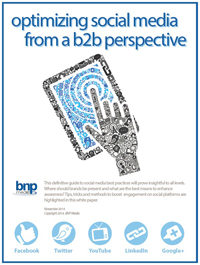A Big Texas Success
By Mary Ellen Kuhn
How this giant of Texas grocery retailing gets it
right in candy and throughout the store.
Things tend to loom
large in the Lone Star State. Consider the steaks, the Stetsons, the
horizon, the hair even. Not to mention the attitudes and loyalties. After
all, this is a state that can lay claim to its very own
“national” beer. (Named Lone Star, of course.)
So perhaps it’s not surprising that the
100-year-old native son of Texas grocery retailing, the H.E. Butt Grocery
Company, occupies a commanding position on the Texas food retailing scene,
despite mounting competition from the biggest of the big, Wal-Mart
Supercenter stores.
Founded in Kerrville, Texas, in 1905 and now based in
San Antonio, H-E-B has more than 300 stores in Texas and Northern Mexico
and employs more than 60,000. H-E-B is the largest privately held company
in Texas and one of the largest food chains in the United States.
The chain, privately owned and operated by the H.E.
Butt family, records double the average weekly sales of other top national
grocery chains and three times the average of industry leaders in
same-store sales growth.
According to statistics from Wilton, Conn.-based Trade
Dimensions International published in the June 2005 issue of “The
Shelby Report,” Wal-Mart ranks No.1 in grocery market share in Texas
with 27.1 percent of sales, but H-E-B is an incredibly strong No. 2 with
21.7 percent of the market statewide. And on its home turf in San Antonio,
H-E-B kicks butt, as it were, with a 63.1 percent market share, according
to statistics cited in “The Shelby Report.”
Despite its stature as a Texas retailing legend, the
focus at H-E-B is not all on the big picture. Spending time in the stores
makes it clear that this is a retailer that has achieved large-scale
success by sweating the small stuff and designing and merchandising its
stores to address consumers’ needs — large and small. It is
apparent, too, that H-E-B delivers on its stated objective of providing
excellent service, low prices and great value.
H-E-B’s retailing strengths are clearly
reflected in the candy category. Candy business development manager Louise
Briggs — who admits to being a bit of a perfectionist — has
worked overtime to build a business in which sales growth has outpaced the national average and that is positioned to
continue on that track.
For these reasons and many more, Confectioner has
elected to name H-E-B 2005 Retailer of the Year, recognition that goes
annually to a company whose performance in candy sets it apart from the
rest of the retail crowd. (Please see sidebar, “Why H-E-B?,”
for specific examples of ways in which this flourishing supermarket chain
has raised the bar in candy sales and merchandising.)
Getting vertical
H-E-B is noted for its ability to make shopping easy
and fun, and that certainly is the case in the candy aisle. Earlier this
year the chain moved away from its traditional brand sets and unveiled a
new merchandising system in which candy is plan-o-grammed to better address
consumers’ shopping needs.
“Now it’s a much more organized,
easy-to-shop format,” notes Briggs, who says that after deciding it
was time to update the set, she got the ball rolling by meeting with a
couple of candy vendors. “They shared some [consumer] research they
had done,” she reports. From there,H-E-B “melded a number
of different approaches” to come up with the new candy aisle
configuration. In the new set, laydown bags,
for example, are grouped together and the consumer’s eye is drawn to
the section with a colorful, vertically positioned sign that reads,
“Candy Dish Candy.” Other sections are labeled “gourmet
and gift,” “fun and novelty,” “lunch box
snacks” and “especially for you.”
Briggs is pleased with the new look, but she’s
not resting on her laurels. “It’s still evolving,” she
says of the revamped set.
“H-E-B store formats vary rather substantially
from market to market, so the treatment candy gets varies as well, with the candy aisle ranging in length from 16
feet to 72 feet, depending on store size and sales. The average is 44
linear feet.
The chain carries about 900 everyday candy and gum
SKUs and adds about 1,000 more over the course of the four major candy
holidays.
Strong seasons
Unlike many supermarket retailers that have struggled
to compete effectively with mass merchandisers on seasonal candy sales,
H-E-B’s seasonal candy business is flourishing.
The chain has racked up seasonal sales growth that is
approaching double digits, despite a tough Easter season due to the fact
that the spring holiday fell early this year.
H-E-B’s approach to merchandising the seasons mirrors its everyday candy merchandising
strategies. “For seasonal, we started merchandising according to
consumer usage segment, so you’ll have your candy dish items, your
basket fillers, your kids’ novelty gifts, your adult gifts, your
baking and decorating items,” Briggs explains.
“I take a lot of pride in the seasons because I
do spend so much time on it,” Briggs reflects. “It’s just
so labor intensive — from meeting with vendors, making your item
selections, crunching all the financials, spreading your allocations by
store.”
“You’ve got to be really careful,”
she muses. “You’ve got to make sure you buy the right item and
price it to turn and try to make a profit if you can. Because there’s
so much competition, you want to make sure that you price it right so that
you’re giving the consumer a good value. I spend a lot of time on
that.”
Keeping track
This is an area where Briggs’ attention to
detail and organizational skills serve her especially well. “A lot of
the things you do are things you’ve done before,” she reflects.
“So to have really good records helps you do things a lot more
quickly and productively and usually have better results.”
“Part of the organization thing is the accurate
history,” agrees Dave Schulze, who is business unit director and
Briggs’ supervisor. “Knowing how to pull data, knowing what
you’re looking for … from what you purchased last year to
sell-through, every piece of data stays organized.”
H-E-B’s powerful candy presentation moves in for
a strong finish at the checkout. The checkout candy assortment at the San
Antonio store Confectioner toured included not
just the basic mints, gum and singles, but four feet of additional candy
SKUs in the aisle leading up to the register. The assortment can vary from
one checkout line to the next — with the additional SKUs ranging from
theater boxes to peg bags and travel cups. In every store, one aisle
features a four-foot kids’ set filled with novelty items designed to
stimulate impulse sales among the younger set.
An automatic replenishment system helps to ensure that
the checkout sections are well stocked. “We’re pretty proud of
how our front-ends look,” Schulze notes.
Confectionery outposts
Between the candy aisle and the checkout, a shopper in
an H-E-B supermarket can expect to run into candy displays an average of
six to eight times.
“We’ve got end caps dedicated to candy,
power panels, side caps, dump bins, clip strips, what have you,” says
Briggs. “Because of the impulse nature [of candy], it’s
important to get the product around the store.”
“Really it’s all about display and
pricing,” says Briggs. “If you get the product out there in
front of the customer, you’re going to be successful.
“I’ve done programs where I have not
taken the product off-shelf, and I have not seen nearly the lift,”
she continues. “It really makes a big difference. Not every
manufacturer can support the product in that way, but if they can, I need
to take advantage of the available displays and place them in an impulse
location and sign them. And we seem to do quite well.”
H-E-B supplements its basic, everyday-low-price candy
assortment with weekly candy ads. In addition to that, every month, a
different candy SKU is selected as that month’s “push
item.” That strategy has been key to bolstering candy sales.
Briggs explains: “We’ll select an item,
maybe cotton candy in the summer — a seasonally correct item —
and we’ll send out the product and have the stores create product
displays for us. We’ve seen nice lifts.”
To help keep the momentum going, H-E-B likes to share
promotional item sales stats with all the stores on a weekly basis.
There are no cookie-cutter store formats at H-E-B,
where the corporate philosophy involves staying attuned to the needs of
consumers in every neighborhood.
Asked how many formats the 300-plus-store chain
features, Schulze deadpans, “300.” He’s kidding, of
course, but it’s true that no two stores are identically designed and
merchandised, and candy assortments vary depending on the demographics of
the store’s neighborhood.
“We assort to the neighborhood,” says
Briggs. “We’ve got Latino sets, specialty sets, kids’
sections that we’ll put in if we feel it’s a good fit.”
An upscale candy set is currently available in about
70 stores, Briggs reports, noting that the segment is producing
double-digit growth.
H-E-B’s private label or “own brand”
candy is sold under the label Hill Country Fare and includes about 60 SKUs.
“Our own brand candy program has been very successful,” says
Briggs.
Vendor relationships
As one might expect of a retailer noted for doing
things on its own terms, H-E-B does not partner with individual suppliers
for category management. “We don’t work with category captains
at H-E-B,” says Briggs. “Most of our decisions are based on our
internal data, or IRI’s or ACNielsen’s,” she continues.
“We were one of the first innovators of the
category management thing,” says Schulze. “And we’ve
really moved away from even the term category management. We really see
ourselves getting to the next level. There was a time when the
manufacturers could read data better than the retailers,” he
summarizes, adding that this is no longer the case.
Asked what she’d like to see candy vendors do
differently, Briggs shares this response.
“They rarely come to me with any kind of
initiative that is going to help both of us be more efficient. So that
would be one thing I’d look for. And to drive innovation — to
really come out with something unique and differentiated instead of
something that is just a flavor extension.”
She’d also like to be able to provide some
feedback on new product initiatives — before the product has been
finalized. The same goes for display vehicles. “I’d like to be
able to give some feedback on that. And pack sizes. [To explain] what is an
efficient pack size for our stores. We have trucks going to our stores all
the time. We don’t need to have a 48-count case pack.”
“Quarter pallets have become pretty important to
us,” she continues. “When I first started, the manufacturers
were always trying to push those full pallets out there, and you really
just can’t control the sell-through. So I worked hard to get them to
move to that quarter-pallet format. And that way, I can put the right
quantity in the right store. Maybe it’s four vs. one. I think
that’s helped with seasonal sell-throughs because we’ve moved
to the smaller shippers.”
All in all, though, Louise Briggs doesn’t have a
lot of complaints about vendors — or anything else. What else would
you expect? She’s working for H-E-B, Retailer of the Year. n
Why H-E-B?
Confectioner’s Retailer of the Year selection
process involves soliciting input from candy vendors and key industry
figures and then arriving at a final decision based on our own editorial
evaluation. The following are a few of the reasons that H-E-B merited
Retailer of The Year designation in the estimation of Confectioner and our trusted
cadre of industry advisors.
The inline candy section has been
intelligently and attractively reconfigured to address consumer shopping
needs.
One would be hard pressed to find a retailer
who does any better than H-E-B in using candy as a vehicle for creating
attention-grabbing, impulse-purchase-generating points of interruption
within the store.
H-E-B gives candy the star treatment at the
front end, with checkout assortments that go way beyond the basic gum and
candy bar singles SKUs.
Candy buyer Louise Briggs goes the extra mile
to create seasonal sections that rival the best of the mass merchandisers,
and those efforts have paid off. While industry-wide seasonal sales have
been soft of late, H-E-B reports nice growth and expects that trend to
continue.
Ongoing candy promotions. Need we say more?
It’s a given that, if you promote candy effectively, as H-E-B does,
you will sell more of it!
Connected to the Community
Competing as it does against powerful retail chains
such as Wal-Mart, Kroger and Albertsons, H-E-B’s strong relationship
with its consumers serves it well.
To mark its 100th anniversary, for example, H-E-B
created a line of Centennial brand products designed to appeal to the Texas
taste buds of its loyal consumer base.
“The relationship we have with our customers is
one thing that the [Centennial] products capture,” Kate Rogers,
director of public affairsand government relations, told Confectioner’s sister
publication, PLBuyer magazine.
”H-E-B has been a part of people’s lives
in Texas for a very long time. People have a very personal relationship
with our stores and our own brand products," said Rogers.
The Centennial assortment includes offerings
such as Texas-shaped crackers, cheese and chips, as well as a line of H-E-B
sodas in old-style glass bottles and unique flavors such as sangria.
In the candy category, the Centennial collection
features a tin of decadent-looking Pecan Treasures made with Texas pecans
wrapped in caramel and milk chocolate. The product celebrates Texans’
fondness for pecans.
Beyond such product-oriented initiatives, H-E-B makes
it a practice to generously support charitable causes. When hurricane
Katrina hit, H-E-B sprang into action as it has done many times throughout
its history. The company partnered with America’s Second Harvest Food
Banks throughout the state to coordinate donations of relief supplies and
orchestrated donation collections at many of its stores. In addition, H-E-B
was quick to get a water tanker and five trailers filled with critically
needed food and baby supplies on the road to evacuation shelters.
H-E-B’s list of community involvement is long
and includes a year-round effort to combat hunger throughout Texas and
Mexico, as well as support of causes ranging from the United Way to the
fight against breast cancer.
Meet Louise Briggs
Louise Briggs talks fast, stays focused and works
hard, all factors that have contributed to the successes she’s had
with the H-E-B candy category in the year and a half she has been managing
it. Of course, it also helps that she inherited a category that was already
in great shape thanks to the efforts of her current supervisor and former
business development manager for candy, Dave Schulze.
Here’s more of the lowdown on Louise and her
approach to the job — and life in general.
Career Track: Prior to joining the H-E-B team
seven years ago, Briggs spent 10 years as a buyer for the Dillard’s
department store chain. She joined H-E-B as a brand development manager in
the chain's Own Brand Department, and then moved into procurement,
purchasing skin care and sun care products before tackling the candy
category.
Family: She is single, but fondly refers to her two
dogs and two cats as her “four kids.”
Interests: Spending time with family (including
two nephews) and friends and playing tennis.
Toughest Part of the Job: "Creating that
unique balance between the basic and seasonal parts of the candy
business."
Favorite Part: Developing consumer-based
merchandising strategies.
How She Does It: “Candy is a big job.
I’m very focused on what I’m doing at all times. I’m a
perfectionist by nature throughout my life. So I’m not necessarily
that different here than I am in the rest of my life.”
Words to Live By: “Mean what you say!”
100 Years at H-E-B
Selected Highlights in H-E-B’s History
1905 Charles C. and Florence Butt move to Texas
from Memphis, and Florence opens a tiny grocery shop in Kerrville, Texas.
1919 The youngest son, Howard E. Butt, takes over
the family business after returning from World War 1.
1940s H-E-B opens its first air-conditioned stores and
begins stocking frozen food.
1950s First supermarkets are opened,
consolidating a fish market, butcher shop, pharmacy and bakery under one
roof.
1971 Charles E. Butt becomes president.
1997 H-E-B expands into Mexico.
2004 H-E-B introduces its 109,000-square-foot
H-E-B Plus concept store in San Juan, Texas.
2005 Happy 100th Birthday, H-E-B!
Criteria for New Candy Product Selection at H-E-B
Will this new
offering grow the category or just cannibalize similar existing items?
Is the item truly innovative or just another
"me too" product?
Review of the consumer data provided by the
manufacturer (i.e. panel data, purchase intent scores, etc.)
Manufacturer's media plan for the item.





